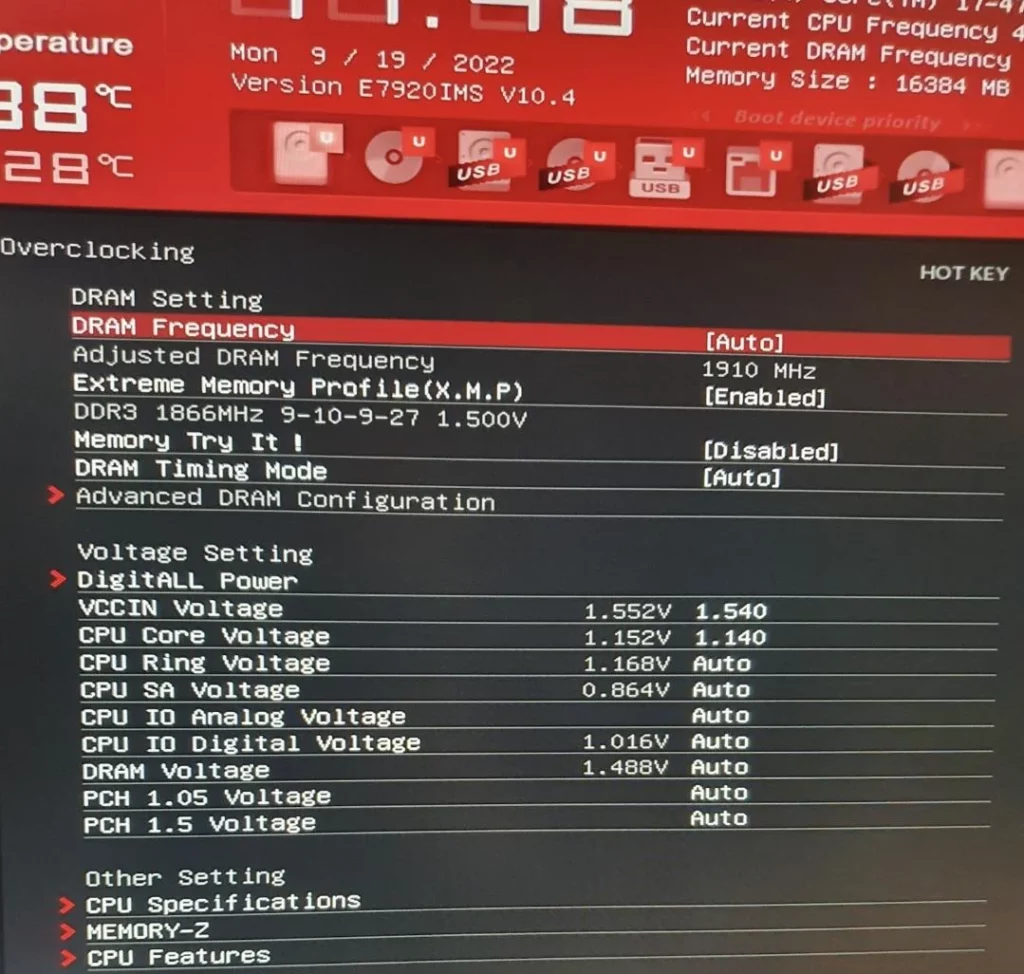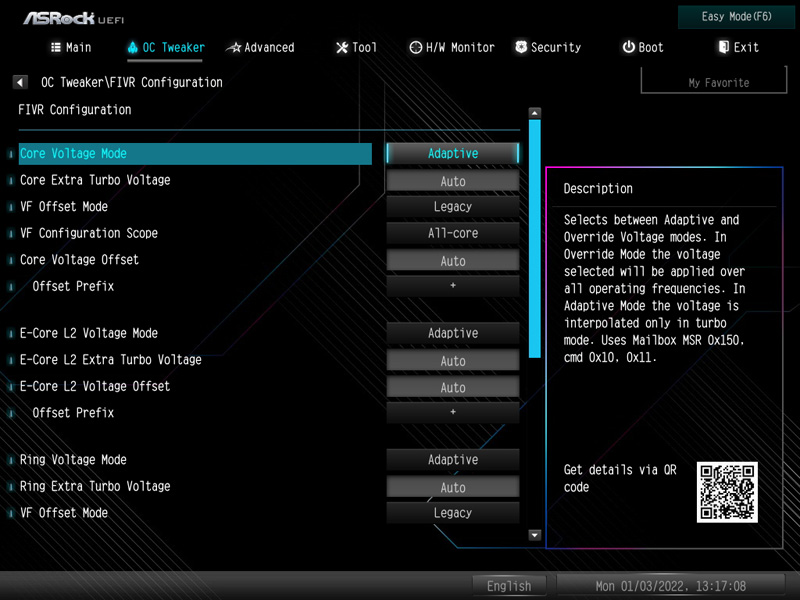CPU L2 Voltage – Overclocking and Performance Tuning
Overclocking, pushing a CPU beyond its default specifications, has become famous for enthusiasts and gamers to extract additional performance from their hardware.
CPU L2 voltage is the electrical potential supplied to the Level 2 cache in a processor. Adjusting it in overclocking helps maintain stability and optimize performance at higher clock speeds.
In this article, we will discuss various parameters that users can tweak; the CPU L2 voltage plays a significant role in achieving stable and efficient overclocks.

The Basics of CPU Voltage:
Voltage is a critical factor in the operation of CPUs. It represents the electrical potential difference applied to the processor, allowing electrons to flow through the various components. CPUs operate within a specified voltage range, and exceeding these limits can lead to instability, overheating, or permanent damage.
The CPU L2 voltage refers explicitly to the voltage supplied to the processor’s Level 2 (L2) cache. The L2 cache is a small but fast memory unit located on the CPU die, serving as a temporary storage space for frequently accessed data. Adjusting the L2 voltage can impact the stability and performance of the CPU, especially during overclocking.
Role of L2 Cache:
The L2 cache is crucial in enhancing CPU performance by reducing the time it takes to access frequently used data. It acts as a buffer between the CPU cores and the system memory, allowing quicker information retrieval. Overclocking often involves increasing the CPU clock speed, and adjusting the L2 voltage can help maintain stability by ensuring the cache operates optimally at higher frequencies.
Effects of L2 Voltage on Overclocking:
When users overclock their CPUs, they increase the clock speed to boost performance. However, this process may lead to instability if not accompanied by adjustments to other parameters, such as voltage. Increasing the L2 voltage can help compensate for the higher frequencies and prevent crashes or system failures.
On the other hand, excessive L2 voltage can lead to increased heat production, potentially causing thermal throttling or damaging the CPU. Striking the right balance between clock speed and voltage is crucial for achieving a stable and efficient overclock.
Adjusting L2 Voltage in BIOS:
The L2 voltage is typically adjustable within a motherboard’s BIOS (Basic Input/Output System). Enthusiasts can access the BIOS settings and fine-tune the L2 voltage and other parameters to achieve their desired overclock. It’s essential to approach this process cautiously, as improper settings can lead to instability or hardware damage.

Advanced Overclocking Strategies:
Enthusiasts and overclockers often employ more advanced strategies when adjusting CPU L2 voltage to achieve optimal performance. Here are some key considerations:
1. Stability Testing:
Before settling on specific L2 voltage settings, it’s crucial to conduct thorough stability testing. Stress-testing tools like Prime95 or AIDA64 can help identify potential issues like system crashes or errors. They incrementally adjust the L2 voltage while monitoring system stability, allowing users to find the sweet spot for their particular CPU.
2. Temperature Management:
Overclocking increases heat production, and adjusting the L2 voltage contributes to this effect. Efficient cooling solutions, such as high-performance air or liquid cooling systems, are essential to maintaining acceptable temperatures. Monitoring temperatures during stress tests and real-world usage ensures the overclocked system remains within safe thermal limits.
3. Dynamic Voltage Scaling:
Some modern CPUs and motherboards support dynamic voltage scaling, where the L2 voltage is automatically adjusted based on the CPU’s workload. This feature helps balance performance and power consumption dynamically. Enabling dynamic voltage scaling can be a more hands-off approach for users who want to optimize their systems without manually adjusting every parameter.
4. Manufacturer Guidelines:
CPU manufacturers often provide guidelines and recommendations for overclocking their processors. Users should refer to these guidelines to understand the safe voltage ranges for different CPUs. Exceeding these recommended values may void warranties or lead to premature degradation of the processor.
5. Custom BIOS Profiles:
Many motherboards allow users to save custom BIOS profiles. Creating different profiles for various use cases, such as gaming, content creation, or general computing, will enable users to switch between configurations easily. Experimenting with different L2 voltage settings in these profiles can help users find the optimal balance for different scenarios.

6. Community Forums and Resources:
The overclocking community is a valuable resource for sharing experiences and knowledge. Online forums and community websites dedicated to overclocking often provide insights into specific CPU models, sharing successful configurations and troubleshooting tips. Engaging with the community can be beneficial, especially for users new to overclocking.
Frequently Asked Questions:
1. Are there risks associated with tweaking CPU L2 Voltage?
Yes, there are risks. Excessive L2 Voltage can lead to increased heat production, potentially causing thermal throttling or permanent damage to the CPU.
2. How do I adjust CPU L2 Voltage?
Typically, L2 Voltage can be adjusted in the BIOS settings of the motherboard. Access the BIOS, navigate to the overclocking or advanced settings, and look for options related to CPU voltage. It’s essential to approach this process cautiously and in small increments.
3. Can I save different overclocking profiles on my motherboard?
Many modern motherboards support the ability to save custom BIOS profiles. This feature allows users to create and store different configurations, making it easy to switch between settings for various use cases, such as gaming, content creation, or general computing.
4. How do I know if my overclocked system is stable?
Stability can be assessed through stress testing, monitoring temperatures, and checking for system crashes or errors during prolonged use. It can be considered stable if the system passes stress tests and operates without issues under normal usage conditions.
Conclusion:
In CPU overclocking, understanding the significance of CPU L2 voltage is essential for enthusiasts seeking to push their hardware to its limits. Striking the right balance between performance gains and stability requires careful consideration of various factors, including clock speed, voltage, and cooling solutions. As technology advances, manufacturers provide users with more advanced tools to tweak and optimize their CPUs, allowing for a more personalized and tailored computing experience.
Sources:
https://www.overclock.net/threads/definitions-of-voltages-for-overclocking.1803733/
https://www.reddit.com/r/overclocking/comments/z3l4v8/should_i_run_the_pcores_and_ecores_on_different/
https://hardforum.com/threads/intel-i5-13600k-on-msi-z690-z790-need-voltage-power-settings-advice.2024017/
https://dl.acm.org/doi/pdf/10.1145/1254766.1254773
https://forums.evga.com/BIOS-Updates-for-Z690-DARK-KNGPN-204-CLASSIFIED-204-m3588761-p13.aspx
Read more:
